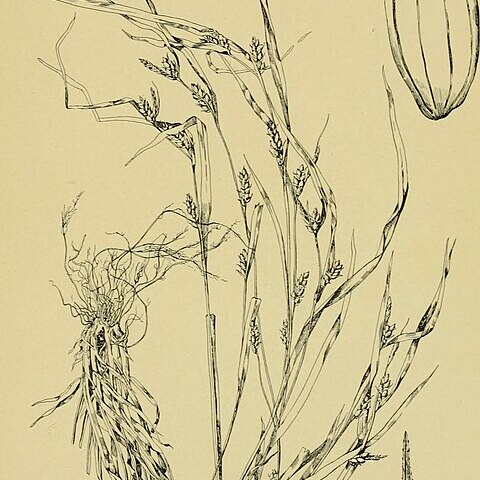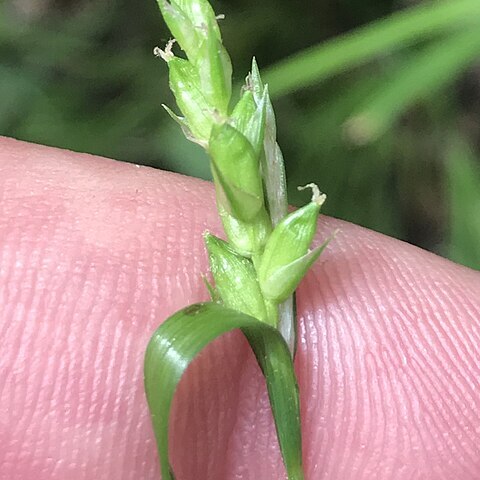Tufted, 3–8 dm, leafy-stemmed; main lvs 4–8 mm wide; basal sheaths becoming green or brown; peduncles and axis of infl ± smooth; staminate spike sessile or nearly so, usually overtopping the uppermost pistillate one; pistillate spikes 2–5, 1–2 cm, loosely few-fld, mostly widely separate, the lowest near the middle of the stem on exsert peduncles, the upper shorter-peduncled; pistillate scales ovate, the body half as long as the perigynia, the mid vein of the lower prolonged into an awn equaling or surpassing the perigynium; perigynia ellipsoid, 4–5.3 mm, two-fifths to half as wide, finely many-nerved, beakless; achene sharply trigonous with concave sides. Woods and fields, abundant; N.B. and Que. to Minn., s. to Ga. and Tex. (C. a. var. turgida; C. bulbostylis; C. corrugata) The older name C. grisea Wahlenb. may prove to apply to this sp.


